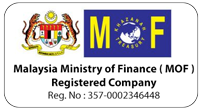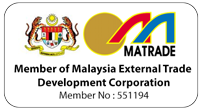A strong digital online presence is crucial for aerospace companies. It shows precision, trust, and innovation in a competitive market.
Your website is the main contact for engineering partners and global clients. It sets the tone for how they view your brand.
A good website shows your skills, builds trust, and puts your company at the forefront of the industry.
For aerospace companies, a website is a powerful digital online presence that drives recognition, trust, and client engagement.
Why Aerospace Web Design Needs a Unique Approach
The aerospace industry requires a higher level of website sophistication.
Clients and stakeholders typically decide using technical data, compliance certifications, and performance records.
This means your website must balance design aesthetics with precision-driven content.
A professional aerospace web design should project confidence and accuracy. Visuals, layout, and structure need to reflect the same detail as your engineering standards.
Every part of the site, such as navigation and images, should show your brand’s reliability and expertise.
Responsive Web Design and Speed Optimization
Users now access websites on a range of devices, such as laptops, tablets, and smartphones.
Responsive web design ensures your aerospace website performs flawlessly across all platforms.
A flexible layout changes to suit any screen size. This makes it easier for visitors to enjoy your content.
Website speed is equally important. A slow site can affect credibility and discourage potential clients.
Optimize images, streamline code, and use reliable hosting to maintain fast performance.
In aerospace engineering, precision is key. So, your website should also focus on speed and efficiency for a better user experience.

Intuitive Navigation and User Experience (UX)
Aerospace companies often feature complex information, including product specifications, capabilities, and certifications.
To keep users engaged, your website navigation must be intuitive. Clear menus, good categories, and easy paths help users find what they need quickly.
Each click should bring visitors nearer to their goal. They might want to look at technical data, browse case studies, or contact your sales team.
A well-organized UX design makes it easy for users to engage with detailed content. It also builds trust in your brand.
Building Credibility Through Design
Trust is a key factor in aerospace partnerships. Your website design must visually communicate professionalism and integrity.
Display certifications such as ISO or AS9100, along with quality standards and safety accreditations.
They help to build trust. These trust signals help potential clients feel confident in your capabilities.
Use authentic imagery that highlights your operations, products, and people. Avoid stock photos that lack personality.
Clear visuals, neat layouts, and consistent design show your company’s precision and authenticity.
Typography, Layout, and Branding Consistency
Typography affects how easily users can read and understand your information. Aerospace websites often present technical data, so text should be structured clearly.
Use a hierarchy of headings (H1, H2, H3), bullet points, and concise paragraphs to make content easy to follow.
Maintain brand consistency across all pages. Use colors that reflect professionalism and precision, such as navy, grey, and white.
Keep your logo, icons, and visual tone unified. Consistent branding creates a strong identity and helps visitors recognize your company instantly.

Scannable Content and Strategic Calls to Action
Visitors usually scan before reading. Structure your aerospace website so that key information stands out.
Use visuals, infographics, and short text sections to highlight strengths and capabilities.
Strong calls to action (CTAs) should appear throughout your site. Phrases such as “Download Spec Sheet,” “Request a Quote,” and “View Case Studies” lead visitors to convert.
Place CTAs where they’re easy to spot. This way, you can boost engagement without breaking the information flow.
SEO and Technical Best Practices in Web Design
A well-designed aerospace website should also support search engine optimization.
Use relevant keywords in titles, meta descriptions, and headings to improve visibility. Make sure each page has clear and descriptive URLs. These should truly represent your services and products.
Security and accessibility are essential in today’s digital environment. Ensure your website uses HTTPS and follows accessibility standards.
A secure and easy-to-navigate site shows the professionalism expected in the aerospace industry.
Aerospace Website Design Checklist
| Navigation | Logical structure and quick access to technical details or certifications. |
| Responsiveness | Optimized for all devices and screen sizes. |
| Speed | Pages load within three seconds, and images are optimized |
| Credibility | Display real images, certifications, and quality standards |
| Typography & Layout | Clear hierarchy, proper spacing, and easy readability. |
| Calls to Action | Visible and well-placed CTAs that encourage user action. |
| SEO Structure | Optimized metadata, keywords, and clean URLs. |
| Accessibility & Security | High contrast, readable fonts, and SSL encryption. |
Boost Your Aerospace Digital Online Presence with The Origin Solution
Related article: How to Write a Company Profile for Civil Engineering Companies







